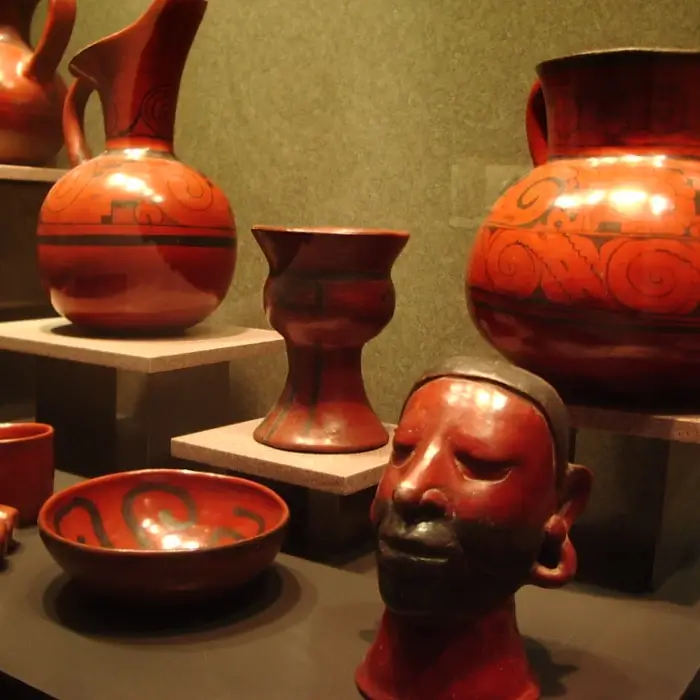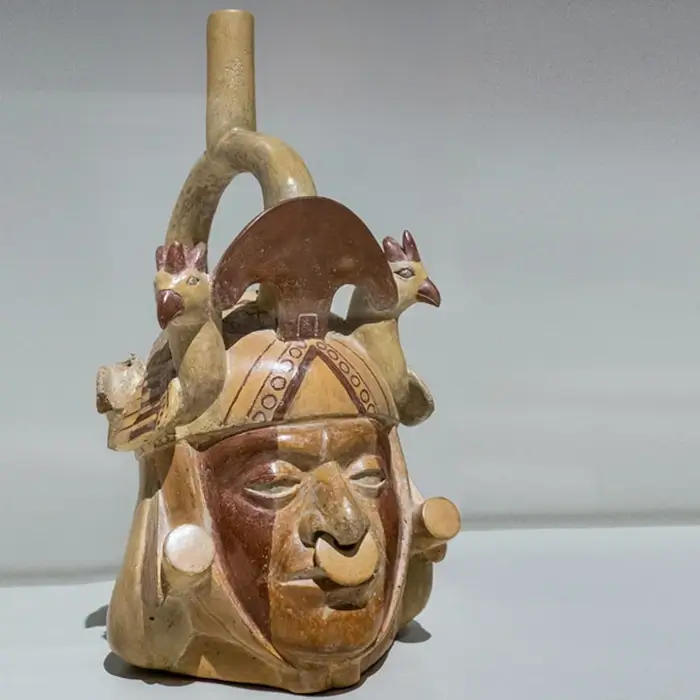The incredible Mixtec ceramic craftsmanship
Mixtec pottery originated and flourished in the Oaxaca region of southern Mexico. It is a vibrant testimony to the rich history and cultural sophistication of the pre-Columbian Mixtec people.
This culture, which reached its peak between the 11th and 16th centuries, was noted for its complex social organization, intricate writing systems and, above all, its impressive achievements in the field of pottery.
The resulting pieces were not only objects of daily use but also important elements in rituals and ceremonies, carrying a deep symbolic and religious meaning that we will explore below.
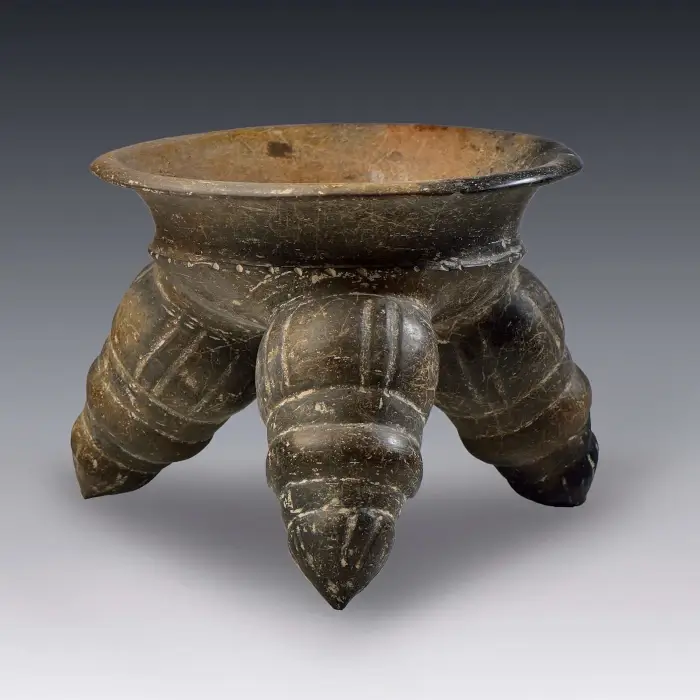
Origin of Mixtec ceramics
Mixtec pottery comes from the pre-Columbian civilization that settled in the south of what is now Mexico.
The Mixtec people, who inhabited the present-day states of Oaxaca, Guerrero and Puebla, are known for their skill in various art forms, including ceramics.
The origin of Mixtec pottery dates back to the Early Postclassic period (approximately 900-1200 A.D.), although the Mixtec region had been inhabited and culturally active much earlier.
The Mixtecs inherited Olmec and Zapotec traditions, integrating them with their own innovations and styles.
This amalgam of influences resulted in a very special craft within pre-Columbian ceramics.
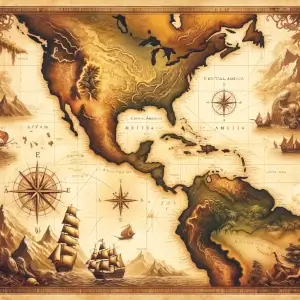
Where was each pre-Columbian culture?
Check our interactive map to see its period and location.
Characteristics of Mixtec pottery
Mixtec ceramics are characterized by their decorative and technical complexity. Often, these pieces feature geometric motifs, human and animal figures, as well as mythological scenes and scenes of daily life, reflecting the worldview and belief systems of the Mixtecs.
Vibrant colors, along with the use of fine reliefs and the “orange negative” technique, in which designs are created by applying a resistant substance to the surface of the piece before dipping it in a pigment, are hallmarks of his ceramics.
His pieces stand out for their intricate geometric patterns, especially in zigzag bands and staggered fretwork (fretwork is a horizontally repeating geometric design used to decorate surfaces).
These fretwork patterns are reminiscent of the decoration on the façade of the Mitla palace. Despite the wear, the warm color schemes of these ceramics are still visible and appreciable in the pieces found today.
A notable example includes vessels with zigzags and spirals in alternating colors, and others with fascinating patterns of zigzag flags superimposed on top of each other. Some of these pieces even feature legs ending in deer hooves, evoking some of the animal motifs typical of this culture.
Another distinctive aspect of Mixtec pottery is its use in ceremonial contexts, as evidenced by the pictographic details of the Mixteca-Puebla style vessels, which stand out for their complexity and ritual significance.
Incense burners or incense holders, for example, featured stepped triangular windows for ventilation and handles with animal shapes, such as extended monkeys, illustrating the connection of these objects with ritual practices.
We see below what types of pieces were characteristic of the potters of this people of ancestral Mexico.
Which pieces of Mixtec pottery are most representative?
The most representative pieces of Mixtec pottery include a wide variety of objects that stand out for their rich iconography and artistic complexity. Among them are:
Mixtec zoomorphic ceramics
Their vessels are vibrant and imaginative examples of Mixtec art. Bird-inspired pieces were common, such as eagles and vultures, which often symbolized the sun and longevity, respectively. The abstract designs on these vessels capture the essence of the feathers and form of birds in great detail and color.
They also sometimes represented animal parts, such as deer feet.
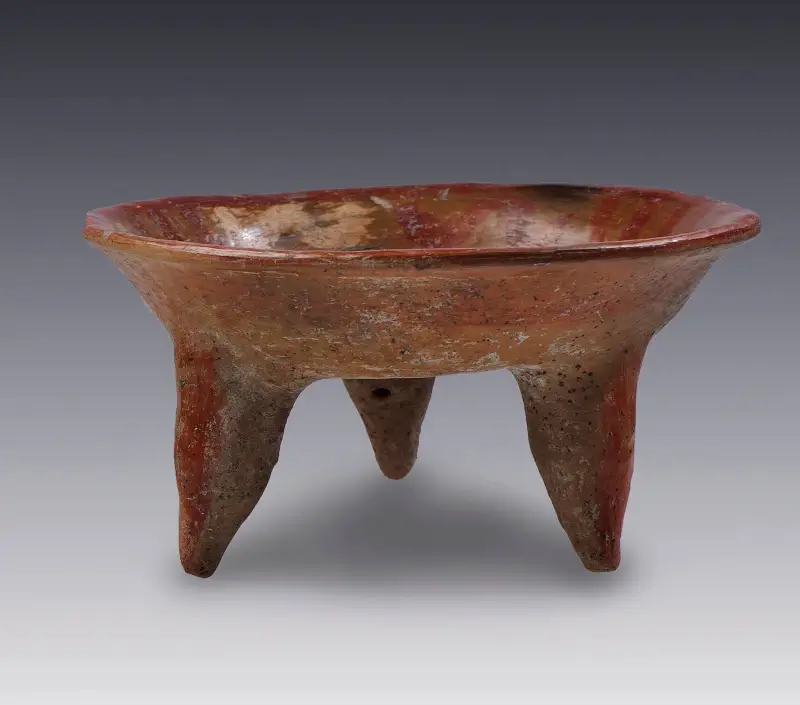
This piece and the one on the cover belong to the Amparo Museum.
Mixtec polychrome ceramics
As I mentioned before, the type of decoration of geometric patterns was very common. These pieces had a great variety and intensity of colors, the result of the use of engobes or applying paints after firing.
Vessels representing Macuilxochitl
A true example of Mixteca-Puebla ceramic quality. These vessels used to have a sculpted head of Macuilxochitl, the god of feasts and games, recognizable by the white design around the mouth.
Tlemaitl Incense Burners
These incense burners, used to carry smoking incense and embers during rituals, are examples of functionality and aesthetics in Mixtec ceramics. They feature stepped triangular windows for ventilation and, in some cases, handles in the shape of stretched monkeys, highlighting the deep symbolism and connection to nature and the divine.
Monte Alban Bone Figurines
Although bone was a popular medium in many Mesoamerican civilizations, it was the Mixtecs who took this art form to its highest expression. These figures, inlaid with precious stones, come from Tomb 7 at Monte Alban and show a high degree of detail and craftsmanship.
Symbolism in Mixtec ceramic handicrafts
The symbolism in Mixtec ceramic craftsmanship is deep and varied, reflecting the rich worldview of this culture. Ceramic pieces not only fulfilled utilitarian or decorative functions, but also played a crucial role in the expression of beliefs, identities and ritual practices.
Vessels with bird designs, for example, are representative of the imagination and vibrant Mixtec aesthetic. These not only capture the physical form of birds, such as eagles and vultures, but also abstract and stylize their characteristics, such as feathers, to reflect symbolism associated with the sun and longevity.
This underlines the importance of nature and its creatures in the Mixtec cosmovision, where animals are not only physical beings, but also bearers of spiritual meanings and messages.
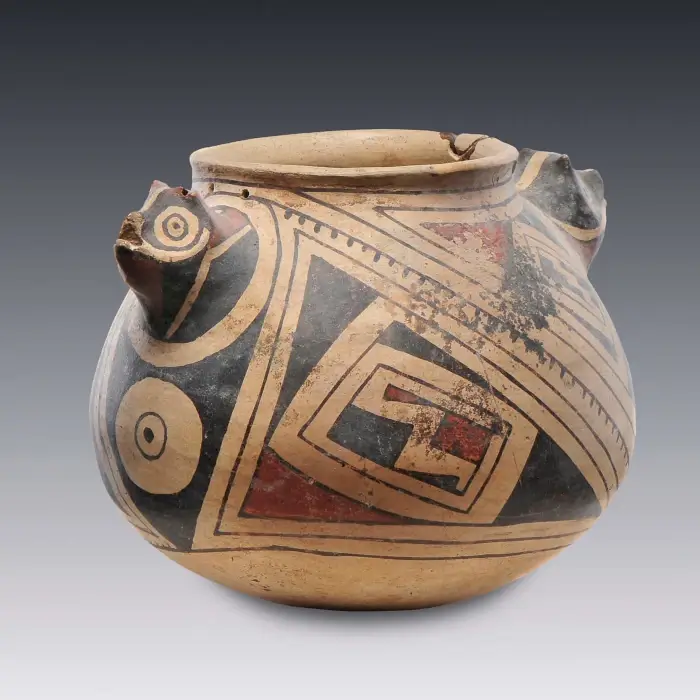
Buy pre-Columbian ceramics
Fortunately, there are artisans who reproduce the techniques of Mesoamerican ceramics, producing incredible works.
Geometric patterns, such as zigzag bands and stepped fretwork, present on many Mixtec ceramics, are not mere ornamentation. These complex designs, inspired by architectural structures such as the facades of the Mitla palace, can be interpreted as abstract representations of cosmogonic concepts, such as the movement of water, mountains, or even the path of the sun across the sky, reflecting the interconnection between the natural and spiritual worlds.
The Mixteca-Puebla artistic tradition, shared by the Mixtec and Cholulteca cultures, is known for its boldly colored and meticulously painted ceramics, which were often found on both wares and illustrated codices.
These objects, loaded with complex iconography, served as a means of communicating stories, lineages, deities and myths, thus integrating ceramics into the social and ritual fabric of the community.
A notable example is a vessel featuring the sculpted head of Macuilxochitl, god of festivities and games, whose representation was a recognizable symbol for the Mixtecs.
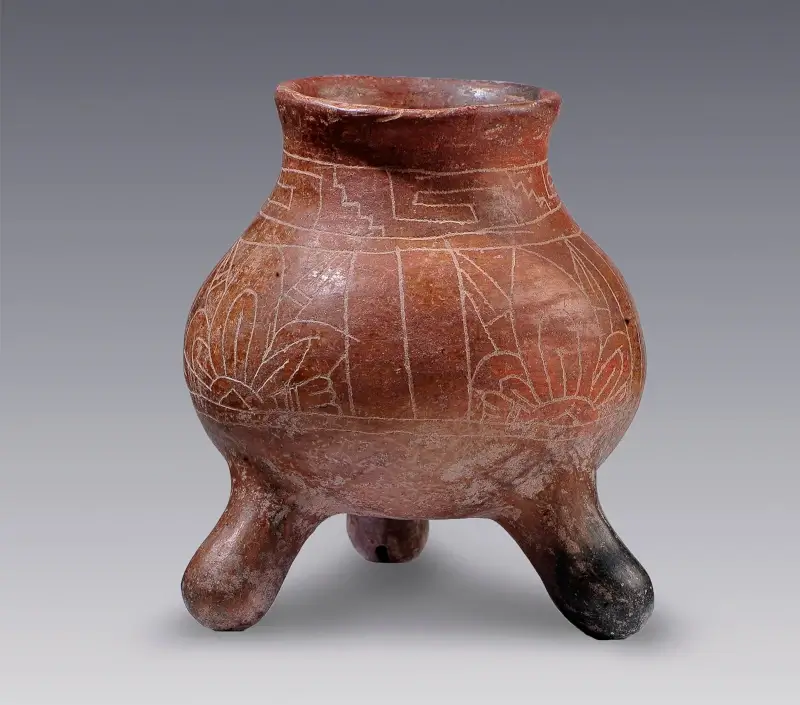
Incense burners, known as ‘tle-maitl’, are another fascinating example of symbolism in Mixtec ceramics. These objects not only served to carry incense during rituals, but their designs incorporated elements such as stepped triangular windows and handles in the shape of stretched monkeys, possibly symbolizing communication with the divine and the spiritual world through the smoke of incense.
The Mixtec culture and its pottery in Mesoamerica
Mixtec pottery is valuable not only for its beauty and complexity but also for what it reveals about cultural interactions in Mesoamerica. Through trade and contact with other Mesoamerican cultures, such as the Aztec and Maya, Mixtec craftsmanship in general not only spread throughout the region but also incorporated outside influences, further enriching its stylistic and symbolic diversity.
These cultural exchanges are reflected in the adoption of new motifs and techniques, which were harmoniously integrated into the Mixtec artistic repertoire, demonstrating the adaptability and openness of this civilization to external influences.
In summary, the legacy of Mixtec ceramics has been of great cultural influence, reflecting the depth and richness of this ancient Mesoamerican civilization.
